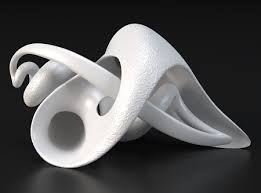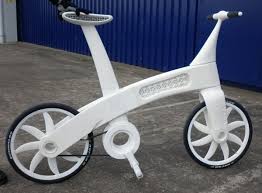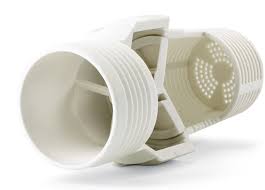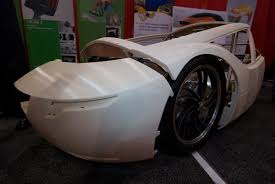Description :
Since 2003 there has been large growth in the sale of 3D printers. The technology also finds use in the fields of jewelry, footwear, industrial design, architecture, engineering and construction (AEC), automotive, aerospace, dental and medical industries, education, geographic information systems, civil engineering, and many others.




Check out also :
The Pentagon is Investing Millions to Advance the Future of 3-D Printing Tech
If you like our article kindly share it with your friends and other social circles. Subscribe on our Newsletter for direct email updates.
Trending News, Big Stories and other Exclusives are also available on our Facebook, Twitter, and on other sites.
Take care!
3D Printing is a technique that can create 3 dimensional objects by laying down multiple layers of material. The technology in itself is not that new, but costs have now dropped to a level where domestic 3D printing is a real possibility.
Recently the term is increasingly being used to describe all types of additive manufacturing processes, or even other types of rapid prototyping technology.
Methods and Technologies Used
A large number of competing technologies are available to do 3D printing. Their main differences are found in the way layers are built to create parts. Some methods use melting or softening material to produce the layers, e.g. selective laser sintering (SLS) and fused deposition modeling (FDM), while others lay liquid materials that are cured with different technologies. In the case of laminated object manufacturing, thin layers are cut to shape and joined together.
Each method has its advantages and drawbacks, and consequently some companies offer a choice between powder and polymer as the material from which the object emerges. Generally, the main considerations are speed, cost of the printed prototype, cost of the 3D printer, choice and cost of materials and colour capabilities.
One method of 3D printing consists of an inkjet printing system. The printer creates the model one layer at a time by spreading a layer of powder (plaster, or resins) and inkjet printing a binder in the cross-section of the part. The process is repeated until every layer is printed. This technology is the only one that allows for the printing of full colour prototypes. This method also allows overhangs.
In digital light processing (DLP), a vat of liquid polymer is exposed to light from a DLP projector under safelight conditions. The exposed liquid polymer hardens. The build plate then moves down in small increments and the liquid polymer is again exposed to light. The process repeats until the model is built. The liquid polymer is then drained from the vat, leaving the solid model. The ZBuilder Ultra is an example of a DLP rapid prototyping system.
Fused deposition modeling, a technology developed by Stratasys that is used in traditional rapid prototyping, uses a nozzle to deposit molten polymer onto a support structure, layer by layer.
Another approach is selective fusing of print media in a granular bed. In this variation, the unfused media serves to support overhangs and thin walls in the part being produced, reducing the need for auxiliary temporary supports for the workpiece. Typically a laser is used to sinter the media and form the solid. Examples of this are selective laser sintering and direct metal laser sintering (DMLS) using metals.
Yet another approach uses a synthetic resin that is solidified using LEDs.
Ultra-small features may be made by the 3D microfabrication technique of 2-photon photopolymerization. In this approach, the desired 3D object is traced out in a block of gel by a focused laser. The gel is cured to a solid only in the places where the laser was focused, because of the nonlinear nature of photoexcitation, and then the remaining gel is washed away. Feature sizes of under 100 nm are easily produced, as well as complex structures such as moving and interlocked parts.
Unlike stereolithography, inkjet 3D printing is optimized for speed, low cost, and ease-of-use, making it suitable for visualizing during the conceptual stages of engineering design through to early-stage functional testing. No toxic chemicals like those used in stereolithography are required, and minimal post printing finish work is needed; one need only to use the printer itself to blow off surrounding powder after the printing process.
Bonded powder prints can be further strengthened by wax or thermoset polymer impregnation. FDM parts can be strengthened by wicking another metal into the part.
Bonded powder prints can be further strengthened by wax or thermoset polymer impregnation. FDM parts can be strengthened by wicking another metal into the part.
How 3D Printing Will Change Absolutely Everything It Touches
The sudden buzz about 3D printing and its potential has triggered a deafening din in the media and elsewhere. Is all the hype realistic, especially since the ability to print objects made of plastics and various other materials has been around for about a decade? Will this prove a transformative technology? Will it revolutionize manufacturing or even medicine?
The answers is Yes, Yes and Yes.
Already, 3D printing has been refined to the point where digital models can be duplicated into physical prototypes or production parts that closely resemble mass-produced products in looks and function. And prices of 3D printers have declined substantially in the past five years, to as low as $1,000 from $400,000 five years ago.
As a result, myriad industries - from automotive (which already created the first 3D printed car) and aerospace to footwear and jewelry - have embraced 3D printing that creates objects by laying down successive layers of materials. The Wohlers Report, an annual in-depth study of the advances in additive manufacturing technologies and applications, estimates 3D printing will grow to become a $5.2 billion industry by 2020, up from $1.3 billion last year.
Indeed, the digital age is providing companies of all sizes - as well as individuals - with the means to design and make a product relatively inexpensively. In turn, these tools are transforming the role of the traditional factory. Soon - really - it will be possible to print out products at home ranging from appliance parts to shoes. You will be able to have that dishwasher part made just for you instantly. This promises to empower a new wave of design and customization fueled by our personal taste and imagination.
Already, Nike with its Nike iD services lets customers personalize and design their own Nike merchandise, down to their favorite colors and materials. Amsterdam-based Freedom of Creation, renowned for its lighting designs, has 3D-printed fixtures gracing the interiors of luxury hotels around the world. Canada-based Weatherhaven, which supplies portable shelters, digitally explores and validates its custom designs without having to build physical prototypes. This saves the company up to $100,000 per shelter. As a result, yesterday’s factory is evolving into a global community of custom design and personal fabrication services. And manufacturers are creatively embracing the changes.
To be sure, the most revolutionary advances for 3D printing are probably a decade or more away. But as 3D printers continue to drop in price, much like color printer prices have fallen, it will not be long before the average tech-savvy household can afford a 3D printer. When that occurs, the dreams of inventors and entrepreneurs will be realized. They simply will build a 3D model of their breakthrough idea on their computer and click “print.”
Furthermore, they likely will produce final products, not just prototypes; 20-25 percent of 3D “prints” are final products today, and analysts estimate that percentage will climb to 50 percent within the next decade.
Already, the boundaries of 3D technology are widening substantially with the 3D printed car, the two-seat Urbee created by KOR EcoLogic of Canada. All of its body parts were made using 3D printers, including its glass panels. Scientists in Bristol, England, printed a fully functional bicycle in March and three months later, they printed a bikini, showing how easy it is to print unique products with the same manufacturing process.
This explains why the medical profession foresees a time when more sophisticated 3D printing will produce replacement organs or drug therapies. There is little question that the evolution of this transformative technology promises to ignite a new era of custom manufacturing.
On the first video CNET's Rafe Needleman interviews the makers of two 3D printer makers and how they are charting the future of manufacturing. The next is a video from Christopher Barnatt of "ExplainingTheFuture.com" that illustrates 3D printing today and in the future.
On the first video CNET's Rafe Needleman interviews the makers of two 3D printer makers and how they are charting the future of manufacturing. The next is a video from Christopher Barnatt of "ExplainingTheFuture.com" that illustrates 3D printing today and in the future.
*by andreascy*























